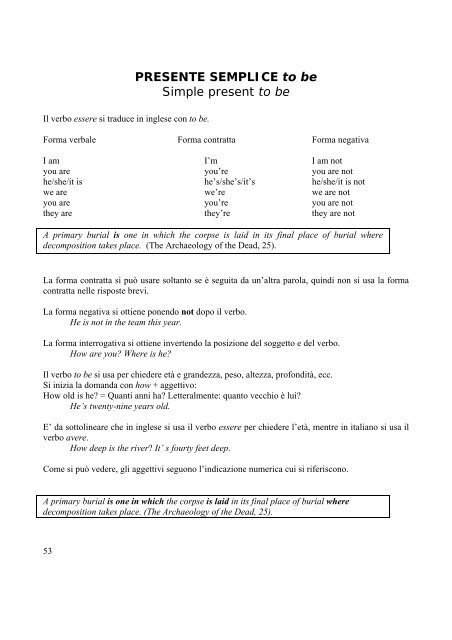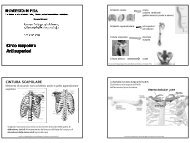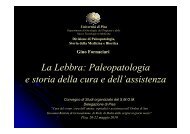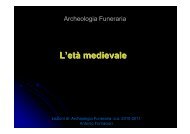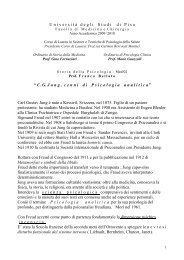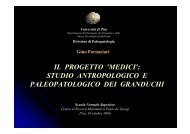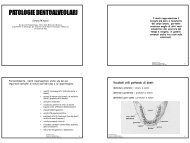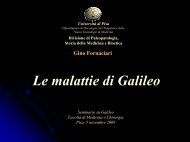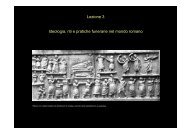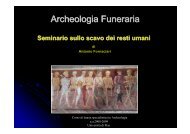Fondamenti della lingua inglese Laura Cignoni - Paleopatologia
Fondamenti della lingua inglese Laura Cignoni - Paleopatologia
Fondamenti della lingua inglese Laura Cignoni - Paleopatologia
You also want an ePaper? Increase the reach of your titles
YUMPU automatically turns print PDFs into web optimized ePapers that Google loves.
Il verbo essere si traduce in <strong>inglese</strong> con to be.<br />
53<br />
PRESENTE SEMPLICE to be<br />
Simple present to be<br />
Forma verbale Forma contratta Forma negativa<br />
I am I’m I am not<br />
you are you’re you are not<br />
he/she/it is he’s/she’s/it’s he/she/it is not<br />
we are we’re we are not<br />
you are you’re you are not<br />
they are they’re they are not<br />
A primary burial is one in which the corpse is laid in its final place of burial where<br />
decomposition takes place. (The Archaeology of the Dead, 25).<br />
La forma contratta si può usare soltanto se è seguita da un’altra parola, quindi non si usa la forma<br />
contratta nelle risposte brevi.<br />
La forma negativa si ottiene ponendo not dopo il verbo.<br />
He is not in the team this year.<br />
La forma interrogativa si ottiene invertendo la posizione del soggetto e del verbo.<br />
How are you? Where is he?<br />
Il verbo to be si usa per chiedere età e grandezza, peso, altezza, profondità, ecc.<br />
Si inizia la domanda con how + aggettivo:<br />
How old is he? = Quanti anni ha? Letteralmente: quanto vecchio è lui?<br />
He’s twenty-nine years old.<br />
E’ da sottolineare che in <strong>inglese</strong> si usa il verbo essere per chiedere l’età, mentre in italiano si usa il<br />
verbo avere.<br />
How deep is the river? It’ s fourty feet deep.<br />
Come si può vedere, gli aggettivi seguono l’indicazione numerica cui si riferiscono.<br />
A primary burial is one in which the corpse is laid in its final place of burial where<br />
decomposition takes place. (The Archaeology of the Dead, 25).


